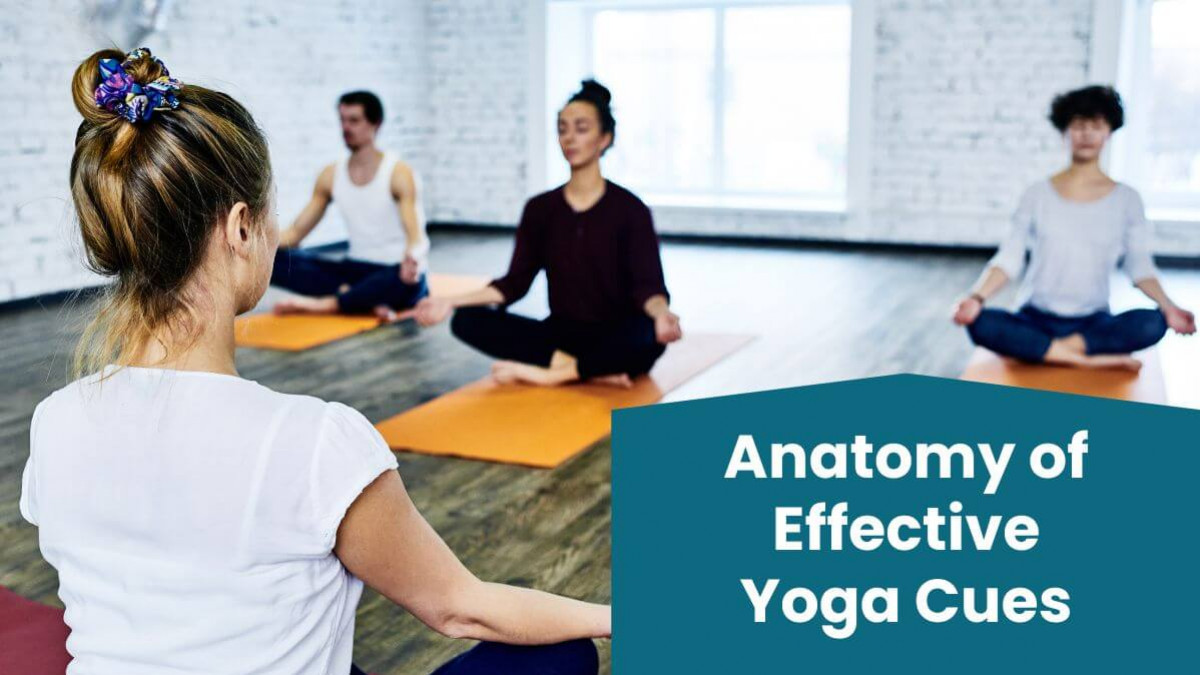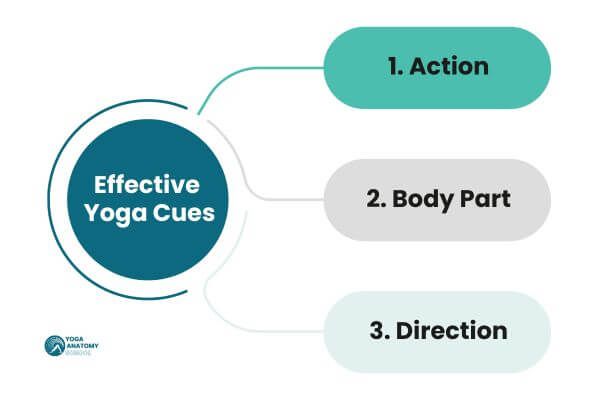The Anatomy of Effective Yoga Cues

Learn how to create effective yoga cues.
.
Are you trying to figure the trick behind effective yoga cues?
.
It may seem like some yoga teachers have a way to always be clear with their cues. You might wonder if there is a secret formula they use.
Well guess what! There is a formula for using effective yoga cues; and I want to ensure it's not a secret.
.
Of course there are many ways to guide students in classes, and verbal cues stand out as the most vital. Students are often in their practice and not able to look at the teacher. Many students will rely solely on listening to the verbal cues - so they better be effective!
.
The number one thing for yoga cues to be is effective is for them to be clear to students.
.
Students have to know what you are saying right away. If a student has to stop and think about what to do, they get pulled out of the practice and will likely feel confused. And let's face it, confusion kills the sense of calm and clarity that students seek in yoga class.
.

.
Let's explore the essence of clear and effective verbal cues and how they shape the experience students have in your class.
.
Action Cues: Simplify to Amplify
.
Have you noticed that the most effective yoga teachers often say the least? They're clear, concise, and focused.
The best way to create clarity and impact is to use simple and clear action cues.
What exactly are action cues? They are commands that tell someone clearly what to do. They include imperative verbs like "step," "lift," or "reach." These commands cut through confusion and provide clear direction.
.
The Power of Three: Action, Body Part, Direction
.
Let's break down the anatomy of effective yoga cues. An effective action cue has three parts: action, body part, and direction.
.

.
1. Action:
Start with a clear command. Avoid using present participles ("ing" forms), as they lack the urgency and clarity of imperative verbs. Remember, clarity is kindness. Some good examples are “press, lift, reach”.
.
2. Body Part:
Be specific about which body part to engage. Use terms that students understand. For example: “left hand," "feet," or "shoulder blades." Avoid complex anatomy jargon that might confuse rather than clarify.
.
3. Direction:
Provide a clear direction, like "towards the back of your yoga mat" or "next to your right hand." Use landmarks in the space to guide direction and orientation, just like giving directions with landmarks on a map.
.
Three-part action cues ensure clarity and precision in your instructions. Compare these examples:
- Effective Yoga Cue: "Step your right foot to the front of the mat."
- Less Effective Yoga Cue: "Stepping right foot forward."
.
The effective yoga cue provides clear direction and leaves no room for ambiguity. In contrast, the less effective cue lacks the direct command and may leave students uncertain about what action to take.
.
The Benefits of Specificity
Specificity in yoga cues strengthens the connection between students' bodies and the yoga practice. By specifying body parts and directions, you create a tangible link between their physical movements and the space around them. This connection fosters presence, which in turn enhances safety and benefits in the practice. In other words, the more specific your cues are, the more students can relate to them in real time and therefore stay present in their practice.
.
Action Cues = Effective Yoga Cues. Use them now!
If you really want students to understand and trust your yoga cues, it's time to use three-part action cues. Perhaps you write some down on paper before your next class. Say them to yourself in your own practice. And then say them in class! You might mess up and that's totally okay. Just begin again.
Commit to using 3 part action cues to create clarity in your teaching.
Like anything, the more you practice, the better you will get. Notice when you slip into using passive or less effective cues, and gently guide yourself back to clarity. Embrace the power of presence that comes with clear and concise instruction.
.
Clear and concise verbal cues are the backbone of effective yoga teaching.
Simplify your instructions into three-part action cues and empower students to move confidently and mindfully through their practice.
This will drive them back to your classes!
.
In conclusion, mastering the anatomy of effective yoga cues is a journey that enhances not only your teaching but also the students' practice.
.
If you're ready to take your cueing to the next level, I invite you to download my list of 16 Anatomy-Informed Yoga Cues to Start Using Right Now. They are all 3 part Action cues!
.

.

If you're eager to expand your toolkit of anatomy cues, grab the Free Yoga Teachers Cheat Sheet: 16 Anatomy Informed Cues to Use Right Now. It's packed with anatomy informed cues that I have refined using my twenty+ years experience as a doctor of physical therapy, an anatomy professor, and a yoga teacher.
These are the exact cues I use in my yoga anatomy courses and yoga teacher trainings to ensure teachers are confident with teaching anatomy informed yoga!
Go from “I can’t learn anatomy” to teaching anatomy informed yoga classes. Your students will not only feel safe, but excited to learn from you and keep coming back!
Categories: : Cues, Effective Teaching Techniques
 Trish Corley
Trish Corley 
